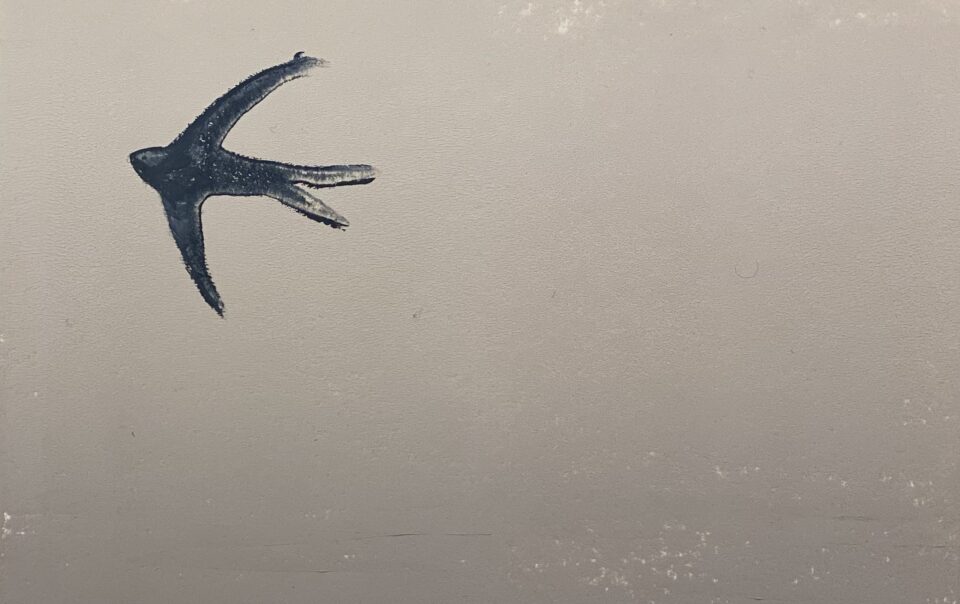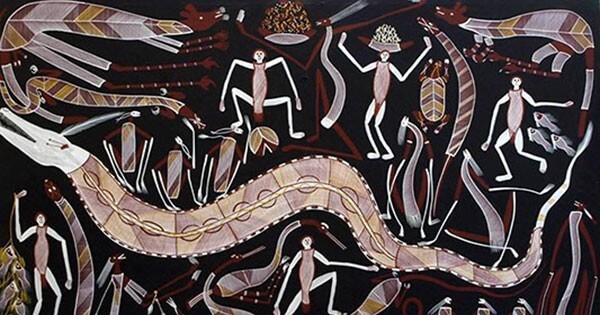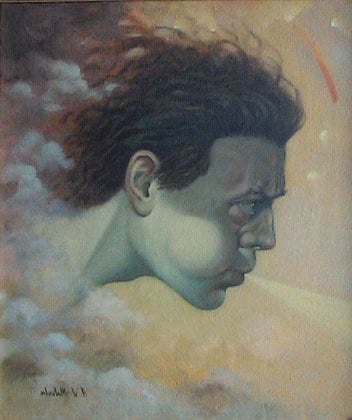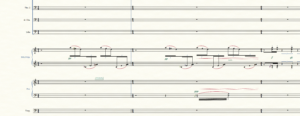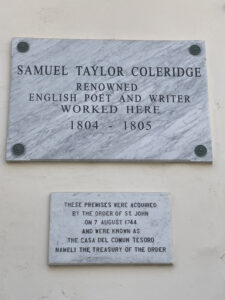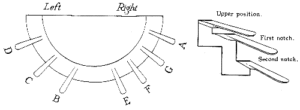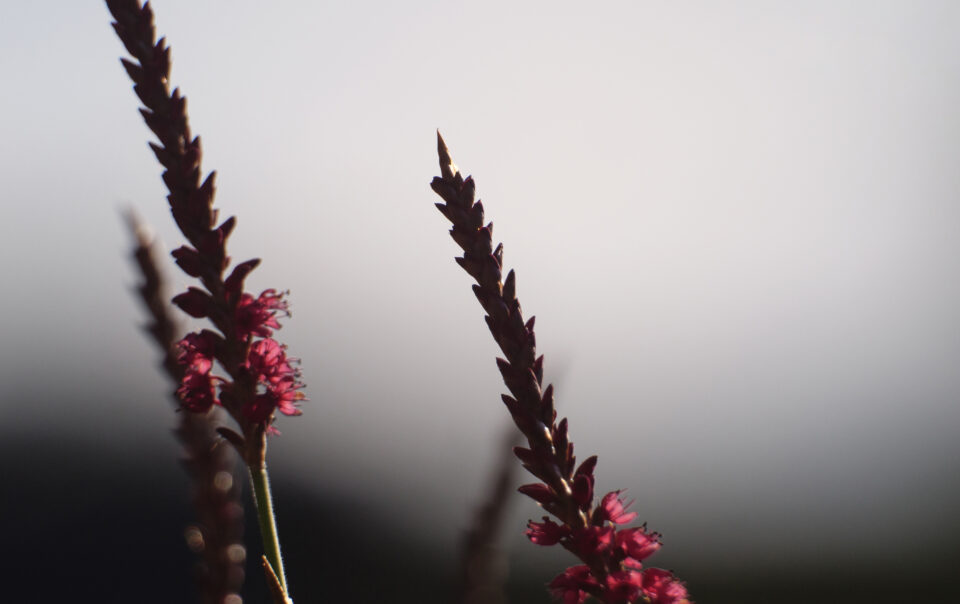(english below)
Ik hou van beeldende kunst, weet er niet genoeg over en besteed er minder tijd aan dan ik zou willen, maar het inspireert me. Het gaat telkens om creëren, terwijl wij als klassiek geschoolde musici toch eerder reproduceren wat een componist schreef, weliswaar met onze hele eigen touch en interpretatie.
In 2020 ontdekte ik het werk van Sarah De Vos en was meteen fan. Fan van de epoxylaag die ze op sommige werken gebruikte, maar zeker ook van het suggestieve, dat je in elk van haar werk terug vindt; ook al maakt ze iets heel figuratief, toch zie je telkens verschillende diepere lagen, die je als toeschouwer met je eigen verbeelding kan invullen.
Geïnspireerd, besloot ik contact met haar op te nemen om te polsen of we samen iets tot stand konden brengen. Joviaal als ze is, was ik meteen welkom in haar studio.
Zalig was het, om tussen werken waar nog maar enkele schetsen op staan -wachtend op haar hand om voltooid te worden- te vertellen over mijn gps project en vooral te merken dat Sarah enorm open staat voor allerlei muziekstijlen en nieuwe uitdagingen.
Helaas gooien drukke, niet compatibele agenda’s vaak roet in het eten als het om effectieve uitvoering van een plan gaat, maar zaterdag(10/06/2023) is het zover!
Sarah en ik zijn te gast bij SECONDroom te Antwerpen. Dit kunstinitiatief geeft gedurende enkele uren carte blanche aan kunstenaars om hun ding te doen.
Ik zal muziek van Hosokawa, Ichiyanagi, Cage, Debussy ea, de kamer insturen en Sarah gaat met aquarel aan de slag. De muziek geeft haar, het beeld mij, impulsen om te creëren; ondertitel van de voorstelling is dan ook Synesthesie.
Hebben we dit nauwkeurig ingestudeerd? Dat was het plan, maar toen we uiteindelijk (alweer door die drukke agenda’s) een moment vonden om te repeteren, bleek dat helemaal niet nodig. Ik was zo blij dat Sarah zich meteen geraakt voelde door de live klanken en trillingen van de harp en ik zag in mijn ooghoek hoe het vouwen van de origami mij op een heel andere manier in de tijd liet bewegen. We willen het publiek maar ook elkaar verrassen en de synergie tussen ons zat goed, dus zaterdag wordt een ‘first experience’ voor het publiek, maar ook voor Sarah en mezelf.
Bij het uitkiezen van de muziek voor dit experiment, stel ik vast dat als vanzelf, alle werken die ik in mijn hoed steek om naargelang de sfeer van het moment naar boven te toveren, 2 dingen gemeen hebben: de componist werd steeds geïnspireerd door een beeld en het komen en gaan van tijd.
Denk aan Hosokawa’s Falling cherry blossoms, waar je als uitvoerder extreem kan nuanceren in timing en volume. Voor ‘Des pas sur la neige’ liet Debussy zich waarschijnlijk inspireren door het schilderij ‘La neige à Louveciennes’ van Sisley. Je hoort letterlijk de stapjes in de sneeuw van een desolaat landschap. Deze prelude was, samen met Danseuses de Delphes, één van de preludes waarvan Debussy vond dat ze “entre quatre-z-yeux” (letterlijk “tussen vier ogen”) moesten worden gespeeld, de setting zo intiem mogelijk, ze kan dus niet ontbreken zaterdag.
Sarah werkt zo goed als altijd met muziek en haalt ook bijzondere emoties uit filmmuziek, vertelde ze me.
Ik wil haar dan ook graag verrassen(hopelijk leest ze deze blog niet 🙂 met wat streepjes filmmuziek tussen het andere repertoire door. De sfeer van stukken die al in de hoed zitten en het gegeven Japan voerde me onmiddellijk naar Ryuichi Sakamoto, die ons helaas onlangs heeft verlaten. Zijn bekendste films waarvoor hij schreef zijn vast ‘The last emperor’ en ‘Merry Christmas, Mr. Lawrence’ , maar hij schreef ook een multimedia-opera, veranderde een glazen gebouw in een instrument en reisde naar de Noordpool om het geluid van smeltende sneeuw op te nemen, om maar te schetsen dat de man ook heel veel met synergie bezig was.
Hij was ook erg gefascineerd door het aspect ‘tijd’. Zijn expositie uit 2021 ‘Seeing sound, hearing time’ concentreerde zich rond acht belangrijke grootschalige werken en geluidsinstallaties die opnieuw dienden te definiëren hoe we een muziekalbum of een kunsttentoonstelling ervaren, terwijl ze verschillende manieren voorstellen om de wereld te begrijpen door middel van geluid en technologie.
Het werk ‘Your Time’ (2017), gemaakt in samenwerking met Shiro Takatani, toont een piano die aanspoelde op de kust na de tsunami van de Grote Oost-Japanse Aardbeving in 2011. Voor Sakamoto vertegenwoordigde deze piano de oncontroleerbare natuurkrachten die onze omgeving, inclusief deze piano, hebben gevormd tijdens zijn reis van land naar zee en weer terug naar land. Sakamoto gelooft dat deze krachten tot op zekere hoogte ook in het vat van dit instrument zitten en daarom nieuwe geluiden en tonen kunnen uitdrukken als gevolg van de blootstelling aan de natuurlijke elementen en deze wereldwijde gebeurtenis.
Bij ons zal het een harp ipv een piano zijn en geen grote multimedia-installatie, maar een blad en penseel, de intimiteit van het moment zoveel mogelijk koesterend.
Ons experimentele project van zaterdag geeft me nu al tonnen energie, goesting en ongeduld. Wie zin heeft om dit met ons te delen klik hier
“What I want to make now is music freed from the constraints of time.”
Ryuichi Sakamoto
I love visual art, but I don’t know enough about it and I don’t spend as much time on it as I would like, but it inspires me. It’s always about creating, while we as classically trained musicians tend to reproduce what a composer wrote, albeit with our own unique touch and interpretation.
In 2020, I discovered the work of Sarah De Vos and became an immediate fan. I loved the epoxy layer she used in some of her works, but I was also drawn to the suggestive quality that you find in each of her paintings. Even when she creates something highly figurative, you always discover different layers that put your imagination at work.
Inspired, I decided to reach out to her to see if we could collaborate in some way. She warmly welcomed me into her studio, and it was wonderful to be surrounded by works in a very early stage, waiting for her touch to bring them to completion. I shared with her my GPS project and noticed that Sarah is very open to various music styles and new challenges.
Unfortunately, busy and incompatible schedules often get in the way of executing oa plan, but this Saturday (10/06/2023), it’s finally happening!
Sarah and I will be guests at SECONDroom in Antwerp. This art initiative gives artists carte blanche for a few hours to be filled in as they like.
I will send music by Hosokawa, Ichiyanagi, Cage, Debussy, and others into the air, while Sarah will work with watercolors. The music will inspire her, and the visuals will inspire me to create. The subtitle of the performance is Synthesia.
Did we rehearse this meticulously? That was the plan, but when we finally found a moment to rehearse (again, due to those busy schedules), we realized it wasn’t necessary at all. I was thrilled to see how deeply Sarah was moved by the live sounds and vibrations of the harp, and in my peripheral vision, I noticed how she -folding origami- allowed me to move through time in a completely different way. We want to surprise not only the audience but also each other, and the synergy between us is strong. So Saturday will be a ‘first experience’ for the audience, as well as for Sarah and myself.
When selecting the music for this experiment, I noticed that, naturally, all the works I included in my repertoire hat have two things in common: the composer was always inspired by an image, and they revolve around the concept of time.
Think of Hosokawa’s “Falling Cherry Blossoms,” where the performer can nuance timing and volume to the extreme.
For “Des pas sur la neige,” Debussy was likely inspired by the painting “La neige à Louveciennes” by Sisley. You can literally hear the footsteps in the snow of a desolate landscape. This prelude, along with “Danseuses de Delphes,” were preludes Debussy believed should be played “entre quatre-z-yeux” (literally, “between four eyes”), in the most intimate setting possible, so it cannot be missing on Saturday.
Sarah usually works with music and finds special emotions in film scores, she told me. So, I want to surprise her (hopefully she won’t read this blog 🙂 with a few snippets of film music interspersed with the other repertoire. The atmosphere of the pieces already in my repertoire and the theme of Japan immediately led me to Ryuichi Sakamoto, who unfortunately passed away recently.
His most famous films for which he composed are probably ‘The Last Emperor’ and ‘Merry Christmas, Mr. Lawrence,’ but he also created a multimedia opera, transformed a glass building into an instrument, and traveled to the North Pole to record the sound of melting snow. As an extremely versatile man he was also fascinated by the concept of ’time.’ His 2021 exhibition, ‘Seeing Sound, Hearing Time,’ focused on eight significant large-scale works and sound installations that aimed to redefine how we experience a music album or an art exhibition while presenting different ways to understand the world through sound and technology.
The work ‘Your Time’ (2017), created in collaboration with Shiro Takatani, features a piano that washed ashore after the tsunami of the Great East Japan Earthquake in 2011. For Sakamoto, this piano represents the uncontrollable natural forces that shaped our environment, including this piano, during its journey from land to sea and back to land. Sakamoto believed that to some extent, these forces are also present in this instrument and can express new sounds and tones as a result of exposure to natural elements and this global event.
In our case, it will be a harp instead of a piano and not a large multimedia installation, but rather a sheet of paper and a brush, cherishing the intimacy of the moment as much as possible.
Our experimental project on Saturday is already filling me with energy, excitement, and impatience. I would love it if you could join us! Info here
